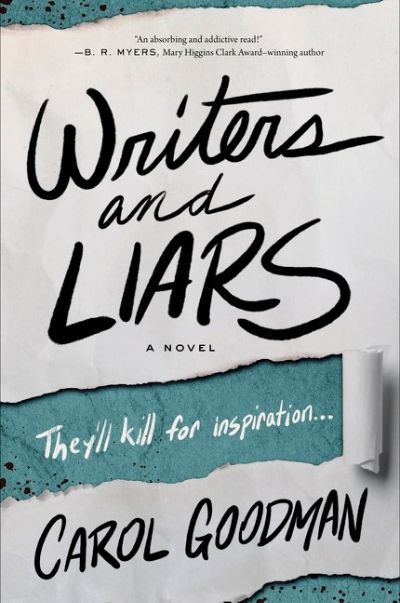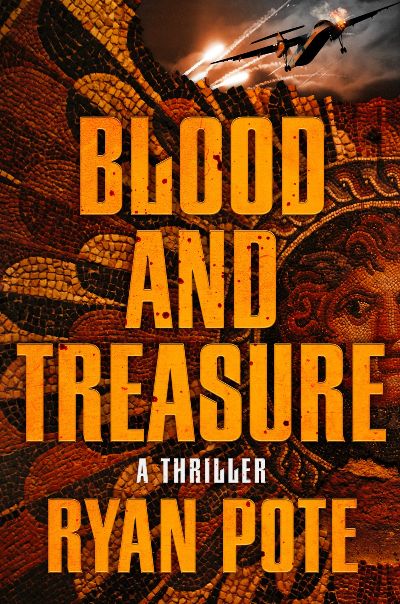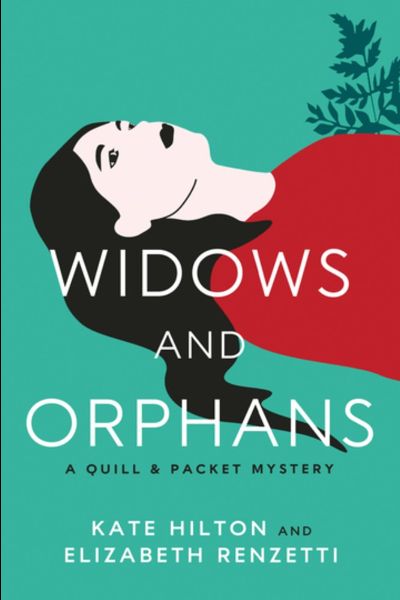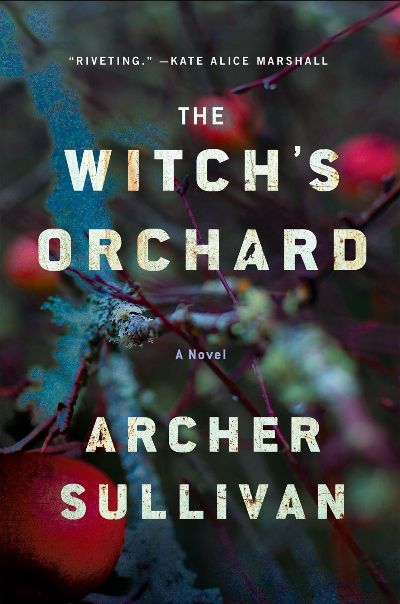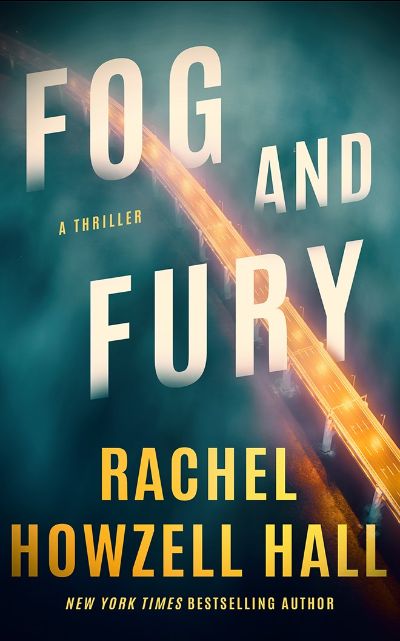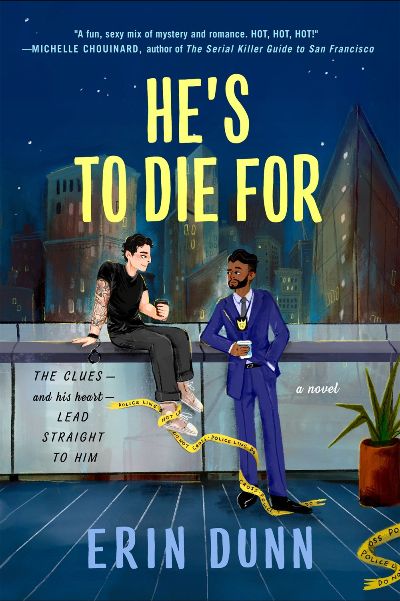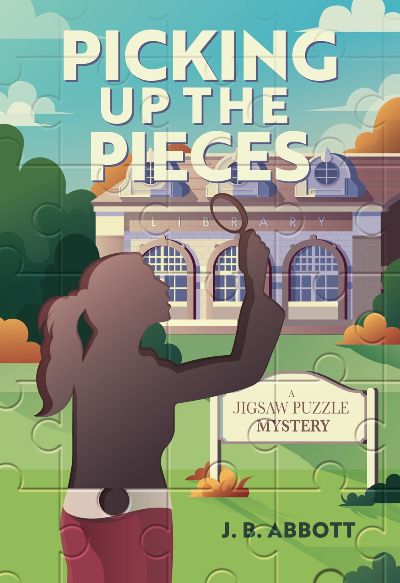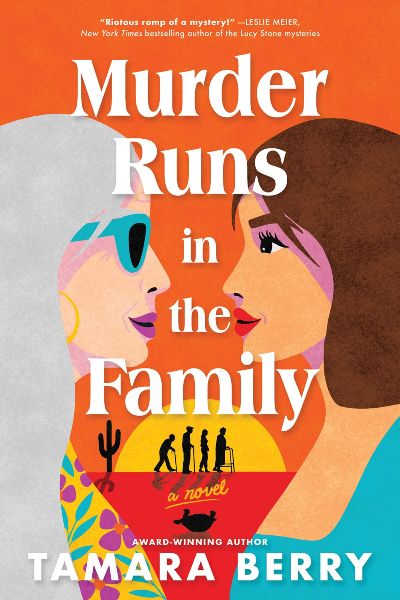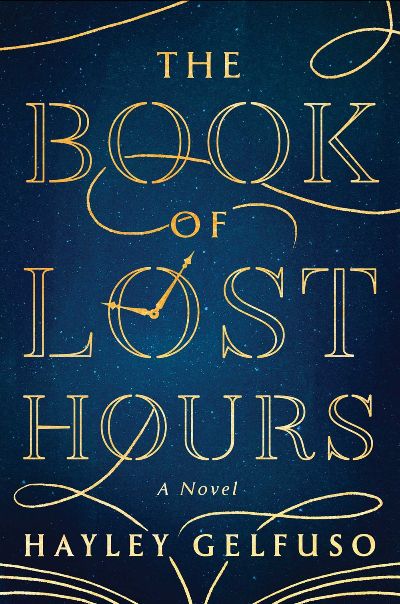Fifteen years ago, a small group of young writers were invited to a retreat on the Greek isle of Eris. (Eris, by the way, is the goddess of discord and strife, a real trouble-maker if there ever was one.) Back then, the goddess managed to sow all manner of discontent, successfully breaking up at least one young couple. Who knows what she has in store for this retreat? Nevertheless, everyone from 15 years ago has been invited back by the mysterious billionaire and publisher Argos Alexander for another retreat, and nearly everyone is game to attend, bitter or not. Several of the participants are still writing, mostly crime fiction, and what writer could ignore powerful Argos? Even our narrator, Maia, who wrote one successful debut years ago, is hoping to make a fresh start. But Argos is absent for dinner the first night, leaving behind directions that whoever can write the best mystery while they are on the island will receive money and fame. Except he’s absent again for breakfast, and when a group goes for a hike, there is Argos, a crumpled corpse at the bottom of a cliff. This gives our writers plenty to worry about, from the expected (who killed Argos, and who will be murdered next) to the use of nature as a weapon. Rich in Greek mythology, this book will fascinate many readers
Review
Pote’s debut thriller mixes the best of Clive Cussler, Tom Clancy, and Dan Brown to weave an unputdownable tale. An incident on the International Space Station leads to more questions than answers and appears to be a prelude to gaining access to a satellite and its tech. Ethan Cain and his team take on big-pocket clients to find hidden treasures and artifacts. Their current client initially had them track down a scroll, and the information revealed on it leads to the location of an ancient weapon hidden for centuries. Evil people and entire governments want to utilize its capabilities, and whoever has this weapon could change the world. Cain learns the coordinates for this device’s underwater hidden location, but when trying to recover it, he watches as a space capsule slams into the water close to them. Inside is an unconscious woman, ejected from the event that occurred onboard the International Space Station. How did she survive, and does she also have an ulterior motive? Pote’s writing captures what makes fans of action-adventure and historical conspiracy thriller writers like Brad Thor and Steve Berry deliver every book. Make this a mandatory addition to your reading pile; you will treasure it forever.
Humor, up-to-the-minute political clashes, and more humor meet in this cozy-adjacent small-town mystery. Our protagonist, Canadian journalist Cat Conway, has had it with the wellness industry, especially its craven criticism of vaccines. Her series of articles on the anti-vax movement has made her a target of right-wingers, and scared advertisers could be the kiss of death for the Quill and Packet—the struggling Port Ellis newspaper Cat works for. Still, when the industry comes to town in the form of the Welcome, Goddess event, at which insufferable influencers Bree and Bliss bring their crystals, navel-gazing, and clothes in colors like oatmeal and wheat, Cat doesn’t shy from covering it. She aims to buttonhole the two about why they’re peddling harmful advice, but plans are derailed in favor of a murder investigation when one of the influencers is found dead at the bottom of a cliff. Finding out who did it brings us into the underbelly of the wellness industry, which is perfectly and hilariously lampooned here, but also invites readers into Cat’s thorny but loving relationship with her wellness-guru mother and an enjoyable will-they-won’t-they romance with her coworker Amir. While this can stand alone, readers will want to go back to series debut Bury the Lead to spend more time with this gutsy journalist.
We don’t know anything about Annie when Max hires her to find his sister, Molly. Molly has been missing for 10 years, and Max has been saving all that time to hire a PI. Max is from rural Kentucky, as is Annie—from a different part, but close enough to matter. Ten years ago, three little girls went missing and were replaced by applehead dolls: Jessica; then Olivia, who was returned; then Molly. Olivia, autistic and non-verbal, has never been able to convey anything that happened. No one but Max and Jessica’s mother wants answers, it seems, but Annie is as dogged as the job requires. As we unravel what the town is about, we also unravel this investigator and find that her past and her ethos blend nearly seamlessly with what she finds. Corruption; abuse; meth labs surrounded by achingly beautiful landscapes; wonderful, goodhearted, traditional people; and downright creeps make up the puzzle she needs to unravel. In a wonderful combination of mountain lore and history, false heroes and major new friends, readers see a picture of backwoods Kentucky that is authentic and engaging. It would be wonderful to see more from this author.
Lucky us suspense readers. If you don’t know Rachel Howzell Hall’s books, then this novel is one fantastic introduction. If you do know Hall, then you will be thrilled to learn that this is the first in a series, the Haven Thrillers series featuring Sonny, a former LAPD cop who has just moved to the idyllic community of Haven (along with her mother, who, with memory issues, is quite a handful). It was high time that Sonny got out of Los Angeles, and joining her godfather’s PI business in Haven—one vowel short of heaven—on the bucolic Northern California coast seems the perfect option. First job? Locating Figgy, a missing goldendoodle. In seeking out Figgy, Sonny comes across her ex-boyfriend, the super-rich Cooper Sutton, a powerful force in Haven. But it’s the discovery of 17-year-old Xander Monroe, one of only four African Americans in Haven, dead on a hiking trail, that really wakes up Sonny. Xander was a super-smart 17-year-old physics student and a star football player with a career at UCLA ahead of him. So why is no one paying attention to his murder? Sonny is one smart, tenacious, Black, woman with her own personal issues to fight against. Powerful social commentary and strong suspense make for one excellent novel.
An annual tradition goes horribly wrong at a lake retreat in Vermont in Day’s latest thriller. Three families have grown up, and lifelong friendships have developed from Julia’s, David’s, and Erika’s families spending time every summer together. So much so that when their children become adults, they continue meeting every year and bring their kids. The area gives off a Jason/Friday the 13th vibe, since a local legend has a young woman disappear every 30 years, and this reunion marks the 30th anniversary of the last disappearance. Tensions explode from the moment they arrive, and everyone appears to have secrets and hidden motives. Day takes characters who initially seem to dislike one another and slowly reveals the bonds and reasons for them to stay as close as siblings forever. When David’s new girlfriend disappears, and his new nanny seems to have ulterior motives for taking the job, the group’s bonds begin to fray. The revelations pile up, and by the end, the reader will be surprised and a bit overwhelmed, which is a good thing. Day perfectly delivers the awkwardness and obligation of family reunions while spotlighting the comfortability and love that makes it all worthwhile.
What the world needs now is more LGBTQIA+ romantic and suspenseful fiction, and fortunately Erin Dunn’s He’s to Die For delivers just that. It’s totally head over heels when NYPD Detective Rav Trivedi (British born, Ivy League educated, Dad’s a Lord, suits are bespoke, get the picture?) can’t take his eyes off rock star Jack Vale, who is as talented a musician as he is super hot. But here’s the one flaw: Jack is the lead suspect in a murder case, and Rav is leading the investigation. Fortunately, Jack is able to clear his name, although both he and Rav remain cautious about hooking up thanks to the media onslaught, their own private natures, and the threat of violence that continues to surround them. Meanwhile the dialog snaps, the stakes are high, and the pacing pops. Give yourself a treat and get a copy of He’s to Die For, which miraculously succeeds as a romance as much as it is a suspense novel. Yes it’s early in the year, but this is already one of my favorite novels of 2025.
The South Island Jigsaw Crew has a fun remit: to test-drive the Cedar Bay Puzzle Company’s creations before they’re approved, making sure they work and critiquing visual design. Well, that’s what they usually do, but now the Washington State group has a new, more urgent project: to figure out who really killed a local woman, so that librarian Jim Chambers, father of our determined protagonist, Katie Chambers, can be freed. This series debut sees Katie plunge deeper and deeper into danger as she becomes the target of a mysterious figure who warns her to quit the case or else, and readers will be gratified by the cozy fiction staple of friends and other locals coming to her aid. A bonus is steadfast firefighter ex-boyfriend Connor, who wants to be back in the picture and whose loyalty keeps stubborn Katie safe even as she pushes him away. Tidbits about jigsaw-puzzle creation add to the fast-moving story, and with its exciting ending, it’s a great choice for both cozy fans and readers of other mysteries, and of course puzzle lovers.
J.B. Abbott is a pseudonym for firstCLUE Contributing Editor Jeff Ayers, author of Leave No Trace and Cold Burn; and author Brian Tracey.
As Amber approaches a luxury Arizona retirement community, she is truly at the end of her possibilities. All her worldly goods are in her backpack, she’s coming off a really bad breakup, and i
she’s looking to mooch off a grandmother she has never met. Amber’s mother has essentially blackballed grandma, but as mom is eternally disappointed in Amber, the young woman hopes to make a connection with her grandma. And oh my, does she! Grandma Judith, now known as Jade, is the glamorous leader of a crime-podcasting pack of residents. The physical resemblance is striking, and as Amber has been working for three years with her PI boyfriend, Bones, hoping to qualify for her own license, so is the subject expertise. The night she arrives, one of the podcast members dies under suspicious circumstances in the studio, and all are suspects. In order to earn her keep, Amber searches for information and for the dead man’s missing tortoise. Then an ex-boyfriend shows up, Jade is arrested, and it is up to Amber to figure things out with the help of a temporarily disabled veterinarian and a nurse. People are not who they seem, a major clue is concealed in the most unlikely place, and above all, Amber grows up and comes to terms with herself and her family. There are good characters here, and an insightful look at senior living.
In 1938, to hide her from the Nazis, a German watchmaker places his 11-year-old daughter in a library balanced between space and time, where the books on the shelves are memories, and promises to return. Lisavet grows up in this world between worlds, and as she grows, she becomes the leader of a movement to stop some of the timekeepers who browse the shelves from burning pages out of the books. In Boston in 1965, a young woman named Amelia is approached by the director of a highly secretive CIA program. Amelia has a watch that can access the library, and the director, Moira, wants her to find a particular book of memories. With no choice, Amelia begins her search, not realizing that success will destroy everything she loves. The story is elegantly poetic, with hints of romance and science fiction mixed with the thriller elements. The time references and how everything operates can be complicated, but it doesn’t matter because the characters and the writing carry the reader on a fantastic journey. What are memories? Can love transcend time? This tremendous debut from Gelfuso reminds us that we write in the book of memories every day of our lives.

